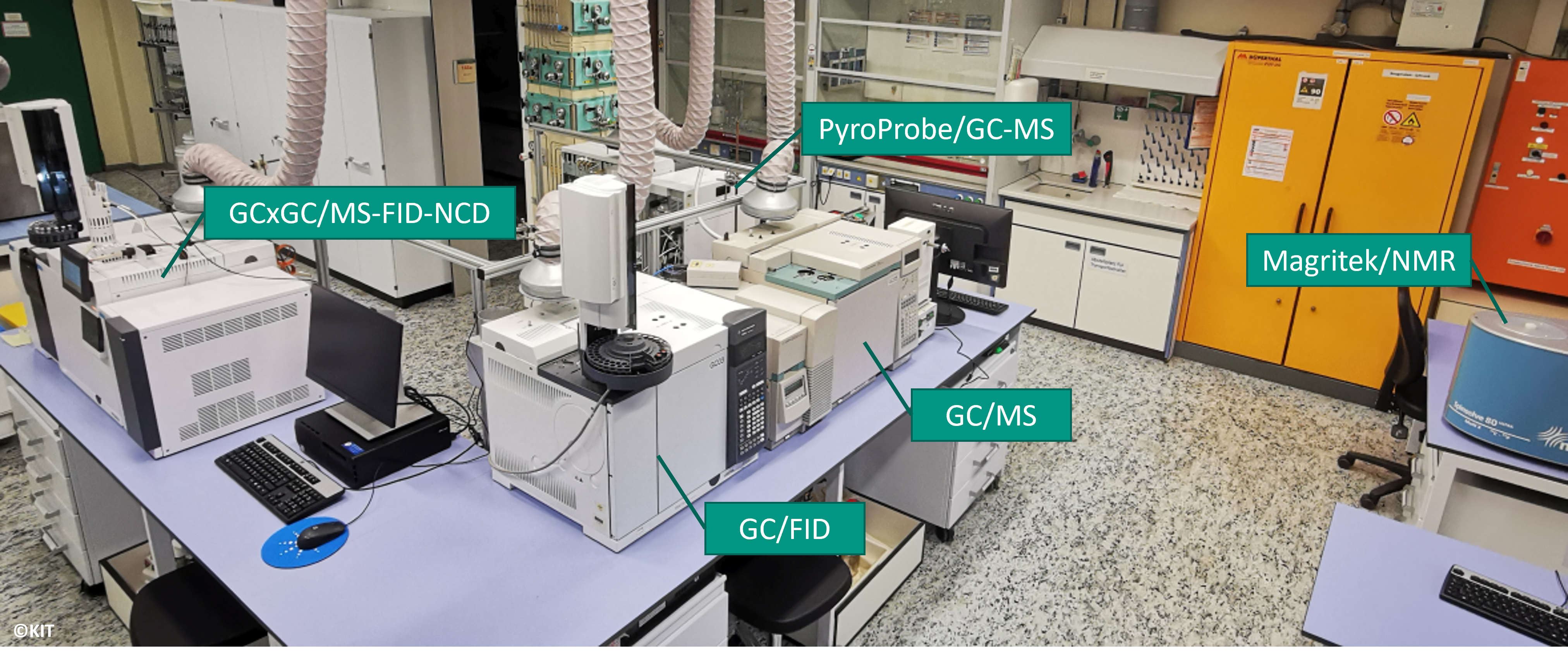GCxGC/MS-FID-NCD

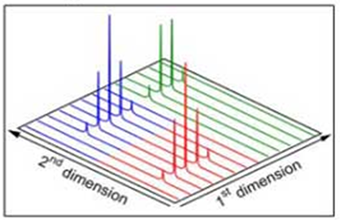
Two-dimensional gas chromatography (GCxGC)
Agilent GC 8890 equipped with a MultiMode or Split/Splitless Inlet and a Reverse Flow Modulator coupled to a detector setup including an Agilent MSD 5977B and a Tandem FID-NCD detector.
Description:
- High-resolution analysis for pyrolysis condensates by optimized compound separation of organic multicomponent mixtures in combination with parallel detector arrangement of MSD, FID, and NCD.
- MSD: Identification of heteroatom-free and heteroatom-containing compounds in the pyrolysis condensates
- FID: Quantification of common components of plastic-derived pyrolysis condensates (n-paraffins, 1-olefins, BTX, ethylbenzene, styrene, phenol, caprolactam), as well as main molecular groups (saturated and unsaturated paraffins, cyclic aliphatic compounds, single aromatics, conjugated and non-conjugated biphenyls, indenes, higher aromatic compounds, heteroatom-containing hydrocarbons)
- NCD: Nitrogen-specific analysis for precise detection of N-containing hydrocarbons
- Sample preparation by dissolution in chloroform
- Carrier gas: Helium
GC/FID
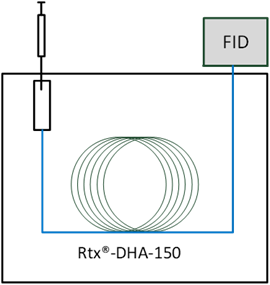
Gas Chromatography-Flame Ionization Detection (GC-FID)
Agilent 7890B GC System with Flame Ionization Detector
Description:
- Chromatographic separation and analysis of pyrolysis condensates
- Qualitative analysis using reference solutions
- Quantitative analysis for products ranging from C5 to C21 (n-alkanes, 1-olefins, aromatic compounds)
GC/MS

Gas Chromatography-Flame Ionization Detection (GC-MS)
Agilent 6890N Network GC System with 5973 Network Mass Spectrometer
Description:
- Chromatographic separation and analysis of pyrolysis condensates
- Quantitative analysis using reference solutions
- After gas chromatographic separation, the complete mass scans (up to mass m/z 800) are recorded as fragmentation patterns (“fingerprints”). These “fingerprints” can then be compared with those in a database (NIST17) to identify the components of the pyrolysis condensates.
PyroProbe/GC-MS
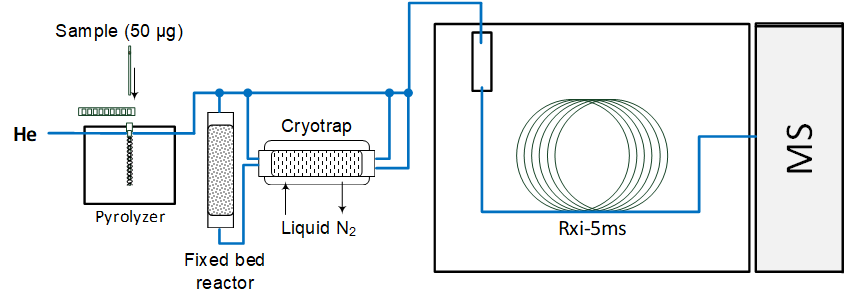
Pyrolysis Gas Chromatography Mass Spectrometry System (Py-GC-MS)
CDS Model 6200 Pyroprobe coupled with an Agilent 7890B GC system and an Agilent 5977B MSD
Description:
- Microgram-scale pyrolyzer coupled with gas chromatography and mass spectrometry for the characterization of primary pyrolysis products
- Operation under inert atmosphere and atmospheric pressure
- Excellent temperature and residence time control
- Different setups enable different analyses:
- Py-GC-MS: chromatographic separation and detailed species identification via mass spectrometry
- Evolved Gas Analysis: direct transfer of products to MSD without chromatographic separation allows temperature-resolved observation of product release
- External tubular reactor: Investigation of catalytic effects, sorption and secondary reactions
- Cold trap: Separation of volatiles from permanent gases for independent analysis of multiple product fractions
Magritek/NMR
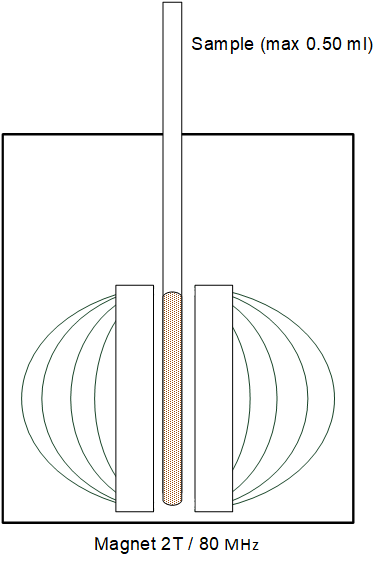
Low-field nuclear magnetic resonance spectroscopy (NMR)
Nuclear magnetic resonance spectroscopy allows rapid identification of aliphatic, aromatic and functional organic groups in pyrolysis condensates. NMR spectroscopy is able to characterize the properties and composition of the sample as a sum parameter. It thus represents a rapid analytical method that can be complemented by gas chromatography.
- Magritek Benchtop Lowfield-NMR Spinsolve 'MultiX'
- Permanent magnet with 2 T or 80 MHz
- Detectable nuclei: 1H, 13C, 19F, 31P
- Sample preparation involves adding tetramethylsilane (TMS) as a standard substance and optionally dissolving in deuterated chloroform
- Identification and semi-quantitative determination of aliphatic saturated (-CH3, -CH2, -CH), olefinic (-C=C-), aromatic and functional organic groups (e.g. oxygen and nitrogen containing)

